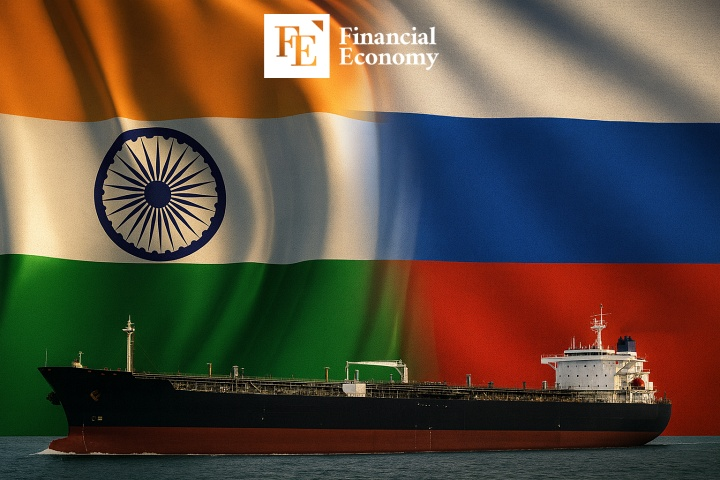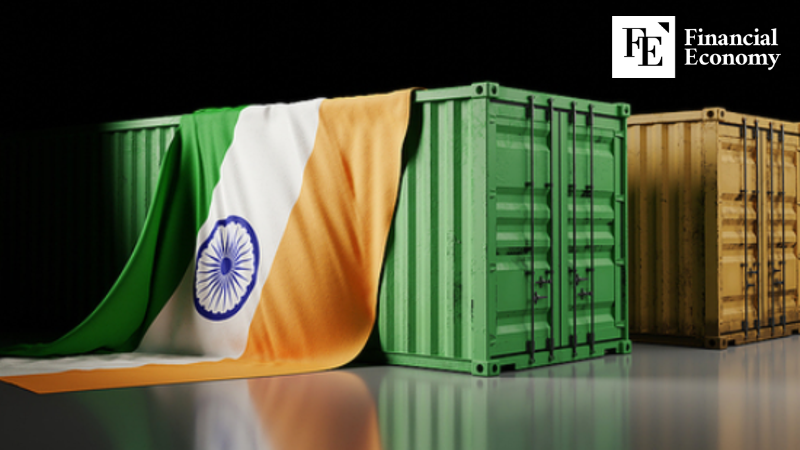Trump Warns India of Tariff Hike over Russian Oil Imports
Input
Modified
“Harsh Tariffs” Signal Mounting Trade Pressure
India’s Three-Year Oil Buying Spree Draws Fire
Weakened Bargaining Power Puts New Delhi at Risk

President Donald Trump has reignited trade tensions with India by threatening tariff hikes in response to the country’s continued purchases of Russian crude oil. The former president, who has proposed raising the tariff ceiling to as high as 26%, has now hinted at even steeper increases, sparking growing concern in India over weakened export competitiveness and instability in currency markets. With just three days left before a 90-day tariff grace period expires, public sentiment is also turning against India, raising questions about its standing in the global trade order.
U.S. Ramps Up Pressure, Signals Return to Protectionism
On August 4 (local time), President Trump posted on his social media platform Truth Social, accusing India of “buying massive amounts of Russian oil and reselling it at a large profit.” He declared, “Because of this, I will raise the tariffs India pays to the United States.” Trump further criticized the trade imbalance, noting, “India sells a lot to us, but we sell almost nothing to them.” His remarks underscored both a desire to penalize India for its trade with Russia and long-standing dissatisfaction with bilateral trade deficits.
Trump’s intent to impose higher tariffs on India was reiterated in person later that day at Allentown Airport in Pennsylvania. Speaking to reporters, he condemned India’s oil trade with Russia as a source of “huge profits” and warned that such behavior could no longer be tolerated. “Countries that continue energy deals with Russia can no longer be considered U.S. allies,” he stated, calling for “additional trade sanctions” against such nations. His comments signaled that the issue was not only economic but also geopolitical in nature.
During his first term in office, Trump had already imposed trade restrictions on Indian goods. In 2018, the U.S. levied steep tariffs of 25% and 10% on Indian steel and aluminum, respectively, and in 2019 removed India from the Generalized System of Preferences (GSP) program. At the time, the U.S. Trade Representative cited India’s failure to provide American companies with fair and reasonable market access. Although bilateral negotiations resumed intermittently in subsequent years, it was not until the Biden administration that relations partially normalized.
Trump’s latest statements suggest a renewed campaign of pressure on India. In response, Randhir Jaiswal, spokesperson for India’s Ministry of External Affairs, issued a statement on X (formerly Twitter), calling the targeting of India “unjustified and unreasonable.” He explained that due to significant reductions in supply from traditional sources following the Ukraine war, India was compelled to increase oil imports from Russia. “Like other major economies, we will take all necessary measures to safeguard our national interest and energy security,” he added.
Russia’s Oil Re-Routing Undermines Sanctions
Since Russia’s invasion of Ukraine, India has significantly ramped up its imports of Russian oil. According to energy media outlet OilPrice, between January 1, 2023, and July 17, 2024, India purchased approximately $160 billion worth of crude from Russia—second only to China’s $220 billion during the same period. As Western sanctions shut Russia out of its traditional markets, India and China emerged as key alternative buyers.
India not only benefited from lower energy costs by purchasing discounted Russian oil, but also profited by refining and reselling it to third countries. This strategy proved effective in easing India’s chronic energy supply challenges. Guided by a “national interest first” policy, India maintained that securing the lowest-priced crude in the market aligned with its economic priorities. Furthermore, because it was not subject to Western sanctions, India was able to execute this strategy without legal constraints.
The United States, however, views India’s actions as undermining the effectiveness of Western sanctions. While Indian officials insist they comply with international law and do not engage with sanctioned entities, the U.S. government accuses India of facilitating the rebranding of Russian oil’s origin. Trump’s call for increased tariffs stems directly from this perspective.
Fearing the fallout of strained ties with Washington, India has pledged to reduce its reliance on Russian crude and diversify its supply sources. A senior official at India’s Ministry of Petroleum stated, “We are reviewing options to increase imports from the Middle East, Africa, and North America,” adding that India is pursuing more long-term contracts with Gulf oil producers. However, given Russia’s continued price competitiveness and India’s now heavily Russia-centric import structure, most analysts believe a complete shift in the short term is unlikely.

High Dependence on U.S. Exports Raises the Stakes
Meanwhile, international sentiment is shifting against India. Despite repeated calls through key diplomatic channels to halt its oil trade with Russia, India has maintained an ambiguous stance. This perceived inaction has fueled criticism of India’s “economic opportunism,” with the New York Times condemning its approach as “an irresponsible posture disguised as political neutrality.” India’s arguments about energy security have failed to gain traction in the court of global opinion.
As a result, the gains India made from importing Russian oil now risk being erased by trade retaliation. In 2024, India’s exports to the U.S. totaled approximately $ 87.3 billion—more than double its imports from the U.S., which stood at $ 41.5 billion. The U.S. accounts for roughly 18% of India’s total exports, a dominant share. With key export categories including jewelry, apparel, and agricultural products—high-value consumer goods—a hike in tariffs could send shockwaves across India’s economy, affecting currency stability and foreign reserves.
India’s business sector, anticipating immediate fallout, has urged the government to accelerate efforts to diversify its export markets. However, with limited time to secure alternative buyers, there are few viable options to mitigate the looming impact. In April, the U.S. imposed tariffs of up to 26% on Indian goods, with a 90-day grace period that now has only three days remaining. Lacking leverage in negotiations and trailing in the battle for global opinion, India may have no choice but to enter talks with Washington under considerable pressure.





















